Traditional Korean embroidery exhibition opened in Budapest

Visitors can learn about the art of traditional Korean embroidery at a new exhibition that opened at the Korean Cultural Centre in Budapest on 4 April. A solo exhibition by South Korean textile artist Lee Jeongsuk will highlight this unique craft and provide insight into the social structure of the Joseon era.
The latest exhibition at the Korean Cultural Center in Budapest brings to life the elegance of Korea’s royal court and its traditional embroidery art. Running for three months, starting 4 April, the showcase features works by textile artist Lee Jeongsuk, who has blended the refined art of Korean embroidery with modern aesthetics over her 40-year career.
More than thirty original pieces are on display, including royal garments, folding screens, wrapping cloths (bojagi), traditional ornaments (norigae), and Buddhist-themed embroideries. With their intricate stitching and vivid colors, these artworks offer a glimpse into the court culture of the Joseon Dynasty (1392–1897) and Korean folk beliefs.
Joseon – An era that defined Korean culture
The Joseon Dynasty shaped Korea’s social, political, and cultural development for over 500 years. It marked the spread of Confucianism and a flourishing of the arts, including embroidery. These embroidered decorations on royal attire and traditional objects transport visitors into the world of Joseon. The exhibit also deepens understanding of East Asian perspectives on objects and craftsmanship. During this period, court embroidery became a symbol of power and social status, while increasingly playing a role in everyday life. The aesthetic values and traditions of the Joseon era continue to influence Korean visual culture and artisan crafts today.
Past exhibitions at the Korean Cultural Centre have introduced Hungarian audiences to various traditional Korean crafts. Recent showcases included dancheong—the colorful decorative painting on Buddhist temples and royal palaces—and hanji, the traditional Korean paper-making technique. This newest exhibition puts the spotlight on Joseon-era embroidery, which played a key role in Korea’s cultural heritage.
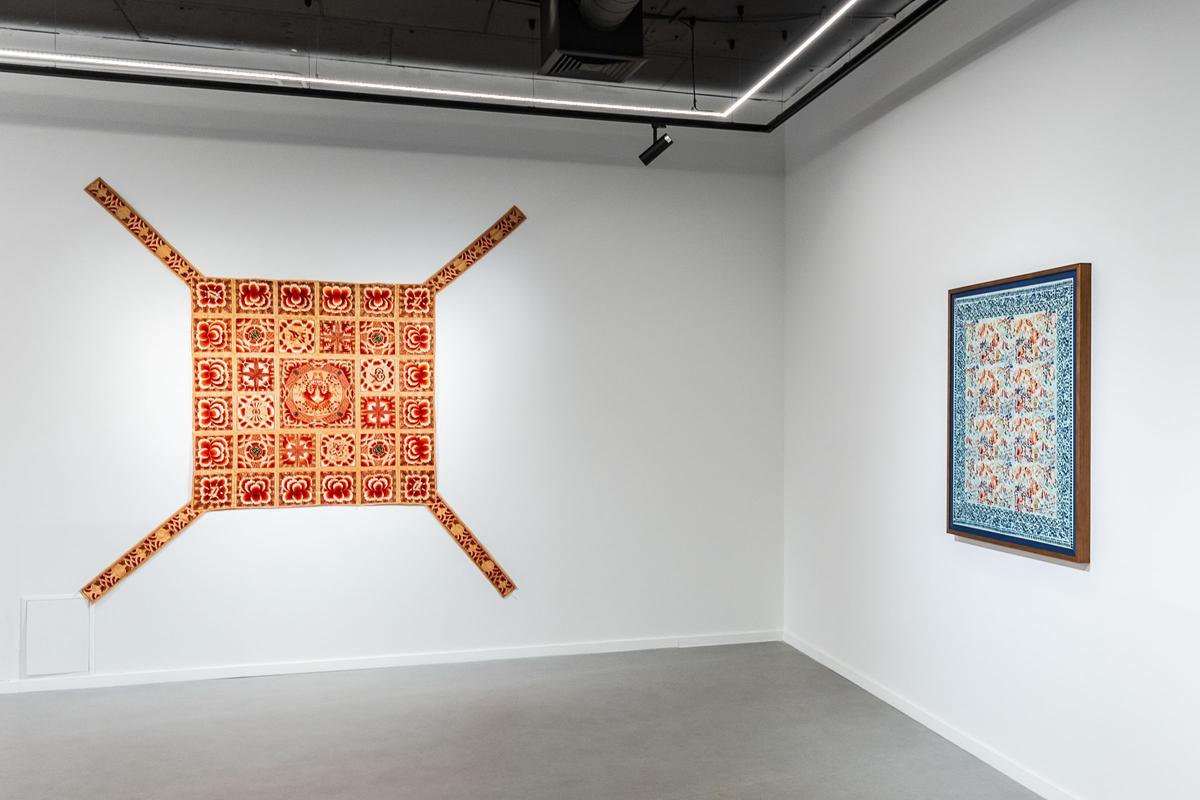
Embroidery as a symbol of power
During the Joseon period, Korean embroidery served as a primary visual indicator of social rank and authority. Royal family members and court officials wore garments adorned with embroidered dragons, phoenixes, peonies, and other symbolic motifs that denoted status and emphasised royal stature.
Visitors to the exhibition can admire the five-clawed dragon embroidery of Yi Seong-gye, founder of the Joseon Dynasty, which symbolised the dynasty’s protective and authoritative role. The phoenix motif, seen on the queen’s attire, represented nobility and dignity. Military officials displayed rank badges (hyungbae) embroidered with tigers and other mythical creatures, while civilian officials had cranes and clouds on their garments. Wedding attire, like the hwarot bridal dress worn by royal brides, also featured intricate embroidery and held significant ceremonial meaning in the Joseon court.
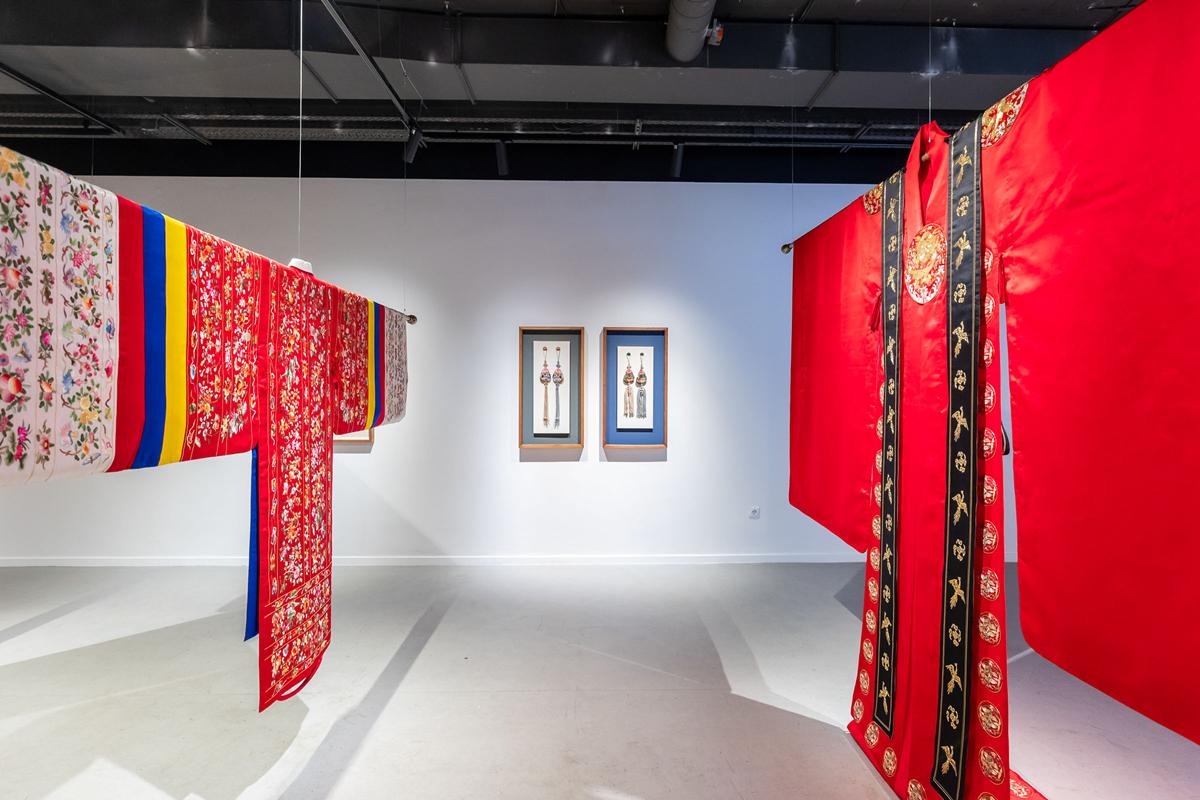
Bojagi: More than just a cloth
The bojagi, or traditional Korean wrapping cloth, is much more than a functional textile—it symbolises luck, harmony, and aesthetic perfection. A dedicated section of the exhibition showcases this art form, which held cultural importance in both daily life and festive occasions.
Lee Jeongsuk’s bojagi works are especially notable, combining modern motifs with traditional embroidery techniques to represent both heritage and innovation. Originally used for wrapping gifts, transporting goods, or protecting items, the bojagi carries deeper cultural meaning. Phonetically similar to “bok,” the Korean word for luck or blessing, bojagi are believed to embody protective and positive energy.
The focus lies in the act of wrapping itself—not the cloth as a source of good fortune, but the intention behind using it. In Korean tradition, this action reflects the concept of bok—goodwill and protection.
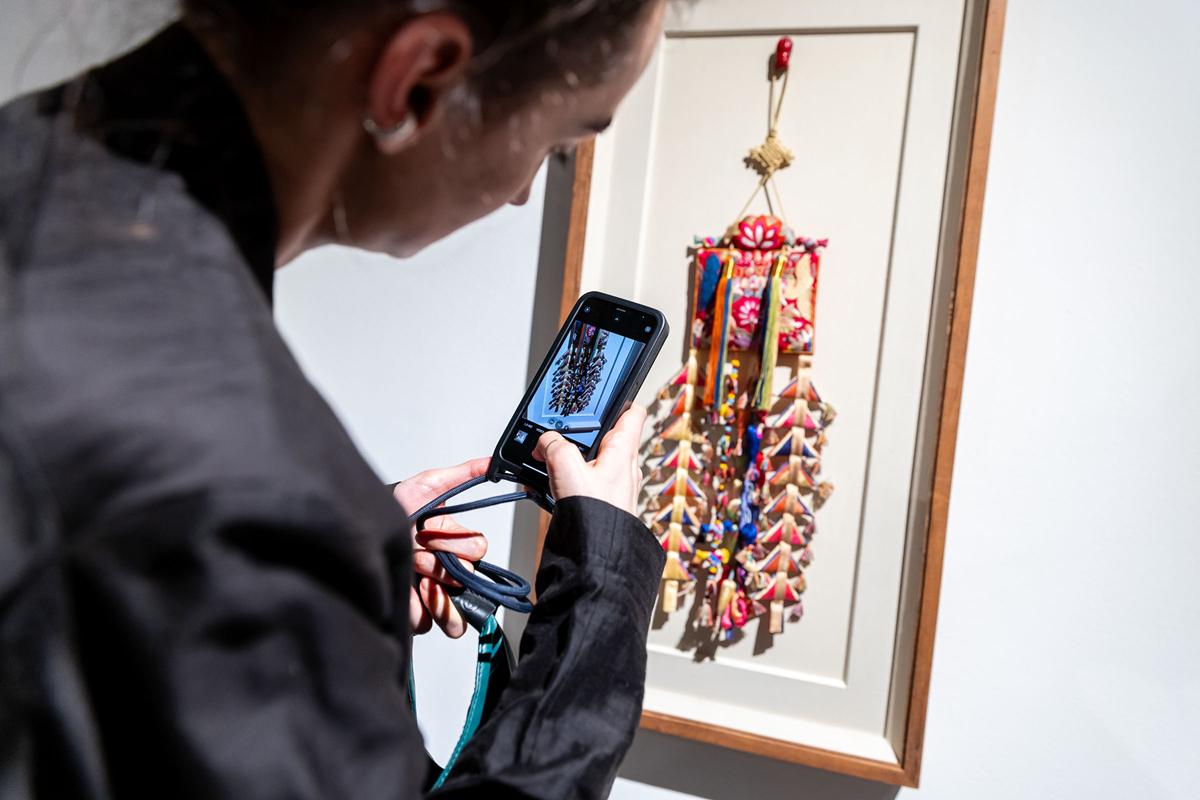
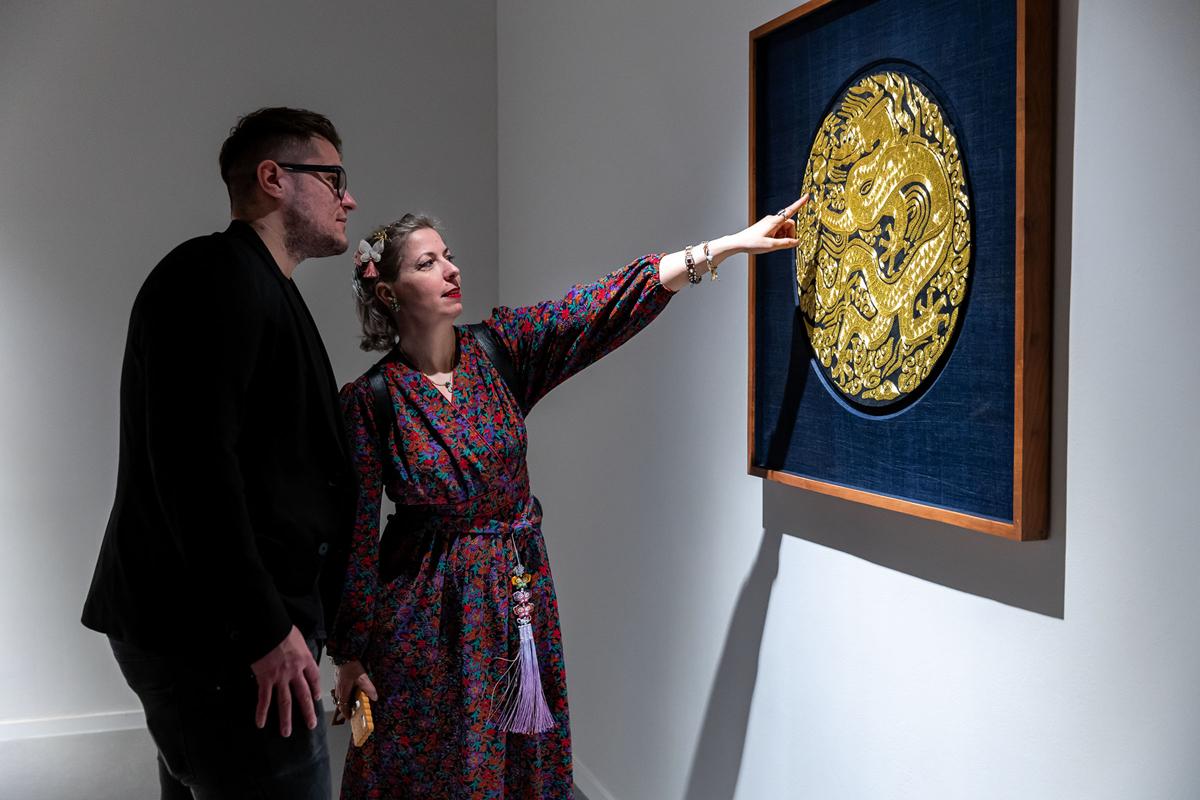
Buddhist embroideries: spiritual messages in thread
One of the exhibition’s highlights is its collection of Buddhist-themed embroideries, featuring sutra passages, lotus flowers, and bodhisattvas. These works convey the spiritual heritage and visual symbolism of Korean Buddhism. Often used for temple decorations, prayer flags, or ritual textiles, these embroideries had ceremonial functions.
Although Confucianism dominated the ideology during the Joseon era, Buddhism continued to play a vital role in personal faith and the arts. Buddhist embroideries, often created by monks, were especially valued as devotional items.
The Buddhist pieces on display illustrate not only a wealth of religious symbolism but also demonstrate the technical sophistication of Korean craftsmanship. With their fine stitches, symbolic color schemes, and patterns made from delicate silk threads, they exemplify how embroidery can bridge the worlds of faith and art.
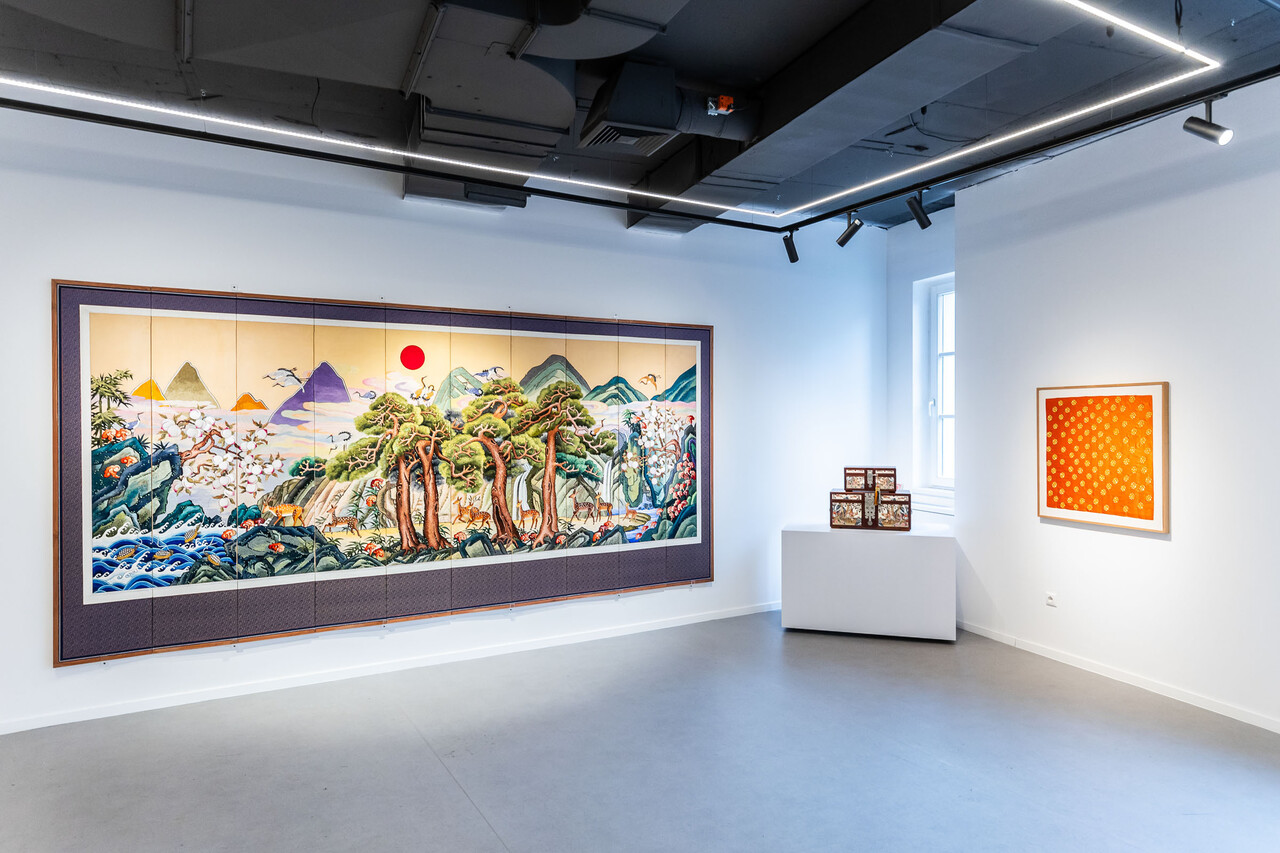
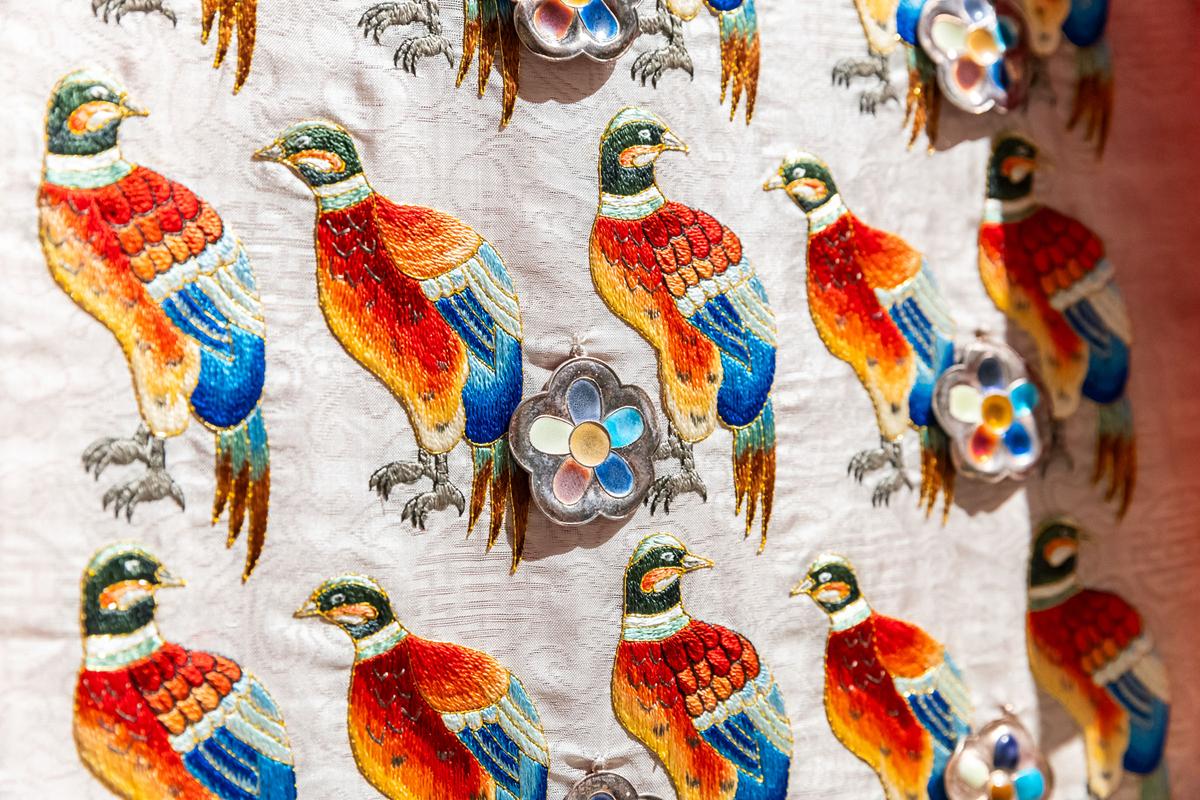
Lee Jeongsuk: Ambassador of Korean Embroidery
With a career spanning over four decades, Lee Jeongsuk has exhibited her embroidery art at more than forty international shows, including in Germany, the Netherlands, and Turkey. “Korean embroidery is more than decoration—it reflects history, social status, and spiritual beliefs,” says Lee.
Her aim is to introduce Hungarian audiences to the aesthetic and symbolic richness of Korean embroidery, fostering deeper cultural ties between South Korea and Hungary.
The exhibition is free and open to the public weekdays from 12 PM to 8 PM at the Korean Cultural Center in Budapest, from April 4 to July 3, 2025.
As we wrote earlier, Hungarian poems can be read at Seoul metro stations, details HERE.
To read or share this article in Hungarian, click here: Helló Magyar





